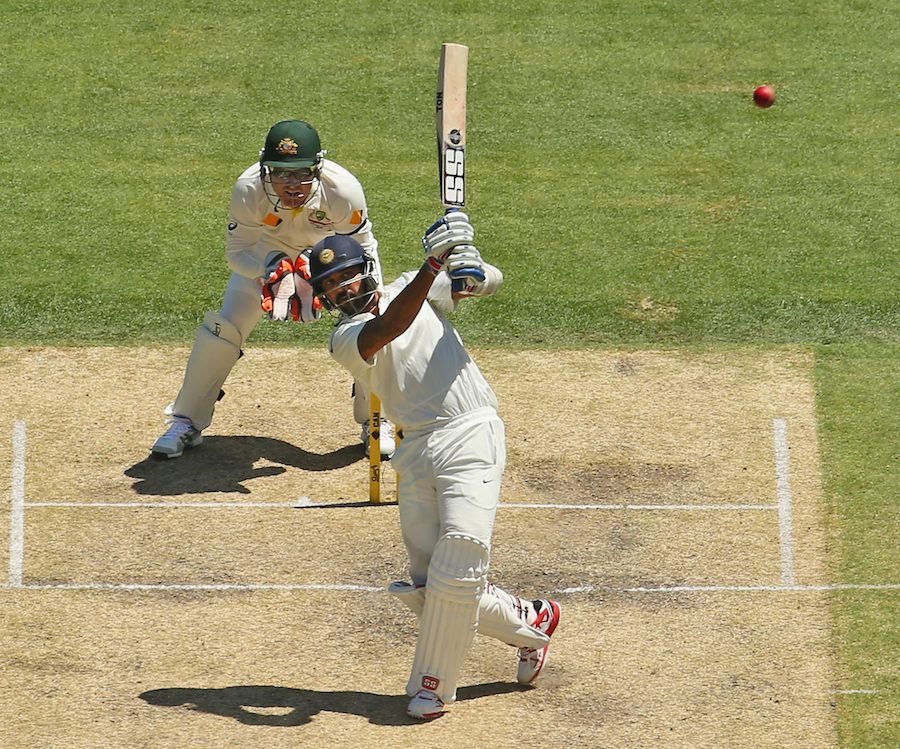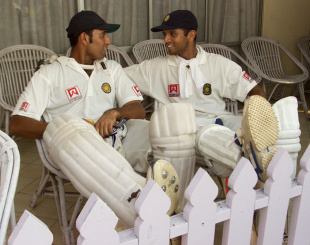Indian fans are a feverish lot. The truffle-like taste of victory, the bitter-gourd flavour of defeat, the sweet relief of stealing a draw - all this we know. But the adrenaline high of losing? The exhilaration of defeat? This is new.
I set the alarm for 5am and watched every ball of the fourth innings in Adelaide. I watched eight wickets fall in 26 overs as India collapsed from 205 for 2 at tea to 315 all out, without feeling suicidal or homicidal.
A friend suggested that 364 to win in a day's play was always so unlikely that it eased the transition from the delirium of hope to the reality of defeat, but I know he's wrong.
He's wrong because I didn't spend Saturday evening ploughing the rich, dark loam of grievance. I didn't think bad thoughts about Ian Gould for giving Shikhar Dhawan out, caught off the shoulder, or Marais Erasmus for fingering Ajinkya Rahane when the ball wasn't in the same latitude as his bat. And this wasn't because I was being fair-minded about the many decisions that went our way; I'm a fan, not a forensic expert. No, it had everything to do with the purposeful vigour with which the Indian batsmen, led by their captain, played.
I have not, so far, been an admirer of Virat Kohli. It's hard to like someone who seems so pleased with himself. But on the evidence of this Test match it's time the caretaker captain for the Adelaide Test took the job permanently.
| There were times during the Test when Kohli's field placings were too cute by half, and the way he handled his bowlers at the start of the Australian second innings was, if you want to be kind, eccentric | |||
This has little to do with Kohli's tactical nous: there were times during the Test when his field placings were too cute by half, and the way he handled his bowlers at the start of the Australian second innings was, if you want to be kind, eccentric. Twelve of the first 20 overs with the new ball were bowled by a debutant legspinner and a part-time offbreak bowler, and the fastest bowler in the team, Varun Aaron, didn't get a bowl till the opposition had put a hundred on the board.
No, Kohli should be India's captain because leading an inexperienced side against an obviously superior Australian team playing at home, he didn't take a step back and he didn't stop trying.
After the wretchedness of the last three years, when Indian touring sides sleepwalked their way through routs, led by a captain whose response to pressure spanned a narrow range from indifference through inertness to insouciance, it was good to see a stubborn team led by a man who actually seemed to enjoy the challenges of the long game.
The most extraordinary thing about India's performance in this Test was that the team backed itself to score more than 350 runs in a day's play twice. The Indians scored 369 runs on the third day of the Test, and then, on the fifth, fell short by 48, backing themselves to score 364 to win.

Under Kohli, India will always be up for a fight © Getty Images
There was a reason why Michael Clarke batted out the fourth day without declaring or having a go at the Indians late in the evening. The reason was: he had seen the same team chase 517 and get inside 150 runs of that total for the loss of five wickets in three sessions. Clarke is an adventurous captain but he isn't a suicidal idiot. Unlike the pundits who were harrumphing about 300 runs being more than enough, he knew he needed all the insurance he could get.
When Kohli was caught at midwicket, hooking Mitchell Johnson just before close on the third day, he wasn't being careless or irresponsible. He was putting a marker down. He was, to use Ian Chappell's favourite word, showing "intent".
I think the five Tests in England, where the Indians tried and failed to wage defensive, attritional battles against a first-rate seam attack in favourable conditions, had persuaded Kohli that grafting a response to Australia's massive first-innings score wasn't an option.
It was a crucial moment, even, perhaps, a turning point. Had Kohli survived till stumps, India would have walked out the next morning with two set batsmen at the crease and the very real prospect of chasing down Australia's first-innings total. But from Kohli's point of view, the choice was not between caution and recklessness. The choice was between self-assertion and subordination. He had been hit on the helmet by Johnson the first ball he faced, and the subsequent tenor of his innings was shaped by his determination not to be the coconut in a coconut shy. He repeatedly hooked Johnson in front of square in both innings, and it's fair to say that the way he imposed himself on Australia's most lethal quick bowler had something to do with the scores India made.
| I think the five Tests in England, where the Indians tried and failed to wage defensive, attritional battles, had persuaded Kohli that grafting a response to Australia's massive first-innings score wasn't an option | |||
After the match, Rahul Dravid asked Kohli if he had ever thought of playing for a draw on the final day, particularly after the flurry of wickets that followed M Vijay's departure. Kohli was categorical: the team had committed itself to going for the runs and he had no regrets about the way "the boys" had played. In particular, he had no regrets about being caught trying to loft Nathan Lyon to the mid-on boundary. There was no point, he said, trying to keep the offspinner out on a pitch that was turning square. You had to challenge him.
Unlike the reproachful post-mortems written on the post-tea batting collapse, Kohli blamed no one, not even Wriddhiman Saha, who was universally condemned for trying to follow up a six and a four off Lyon with a fatal hoick, instead of keeping his skipper sober company. Kohli was proud of them all.
It was a lovely conversation. Dravid, the greatest defensive batsman of modern times, was patently delighted by the daring and attacking intent shown by the younger man. They agreed that India lost to the better team, trying to pull off a win that, had it come off, would have been magnificent heist. Between the death-or-glory determination of Kohli and the cut-your-losses cool of Dhoni, all of us I think, know which one we prefer.
Kohli hit not one but two centuries chasing the prize. Like Browning's bird he sang his song twice over just in case the Aussies thought he couldn't recapture that "first fine careless rapture". The reason we turned off our televisions buoyed by defeat and not cast down by it was that the Indians didn't just perform, they competed with an uninhibited abandon that amounted to rapture.
In the past few years we have watched dismayed as gifted Indian teams that could have been contenders collapsed because they didn't seem up for the fight. This match was different: Kohli's men showed us that under his watch at least they won't die wondering.
Mukul Kesavan is a writer based in New Delhi
This article was first published in the Kolkata Telegraph
This article was first published in the Kolkata Telegraph

